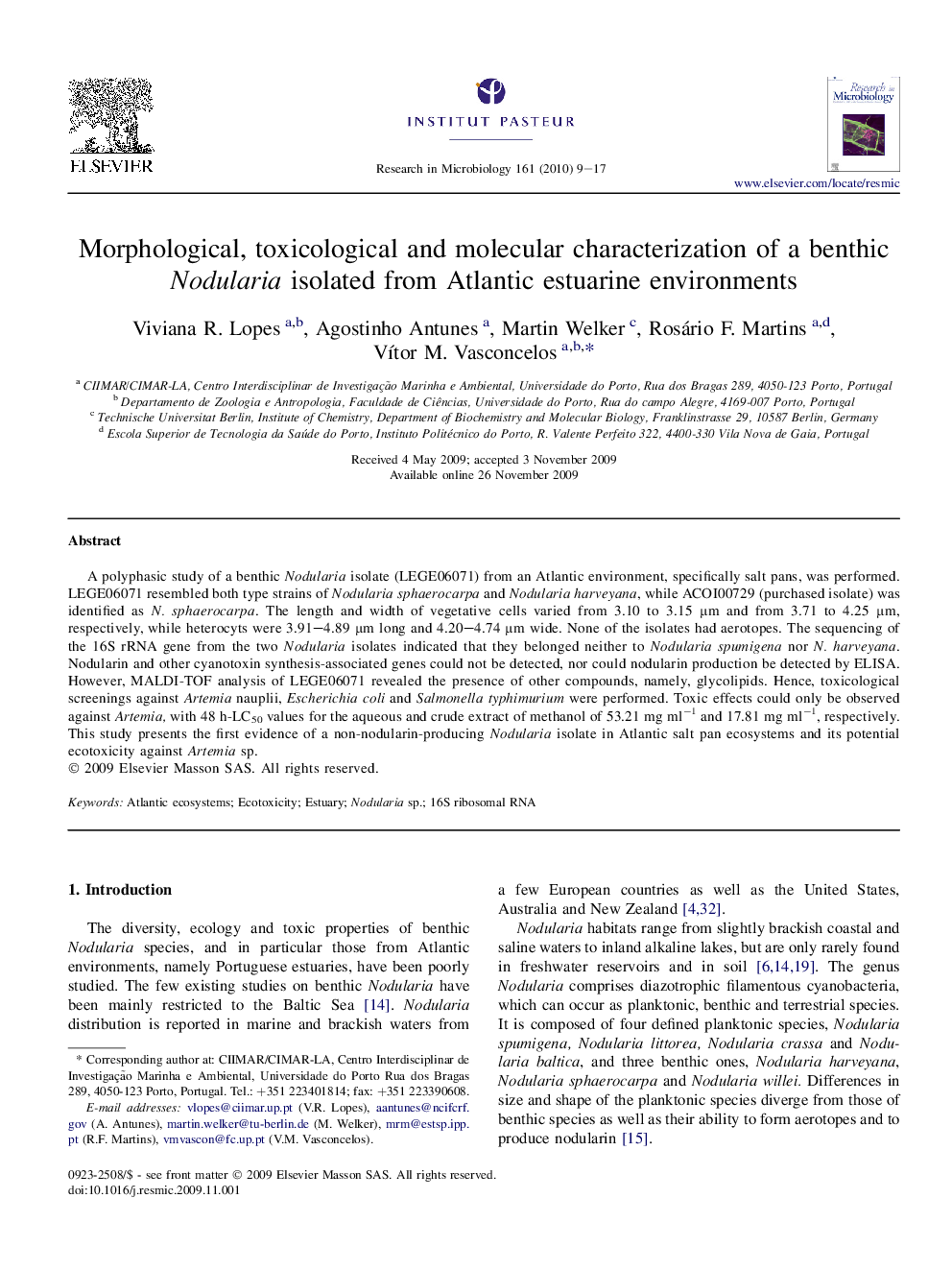| Article ID | Journal | Published Year | Pages | File Type |
|---|---|---|---|---|
| 4359136 | Research in Microbiology | 2010 | 9 Pages |
A polyphasic study of a benthic Nodularia isolate (LEGE06071) from an Atlantic environment, specifically salt pans, was performed. LEGE06071 resembled both type strains of Nodularia sphaerocarpa and Nodularia harveyana, while ACOI00729 (purchased isolate) was identified as N. sphaerocarpa. The length and width of vegetative cells varied from 3.10 to 3.15 μm and from 3.71 to 4.25 μm, respectively, while heterocyts were 3.91–4.89 μm long and 4.20–4.74 μm wide. None of the isolates had aerotopes. The sequencing of the 16S rRNA gene from the two Nodularia isolates indicated that they belonged neither to Nodularia spumigena nor N. harveyana. Nodularin and other cyanotoxin synthesis-associated genes could not be detected, nor could nodularin production be detected by ELISA. However, MALDI-TOF analysis of LEGE06071 revealed the presence of other compounds, namely, glycolipids. Hence, toxicological screenings against Artemia nauplii, Escherichia coli and Salmonella typhimurium were performed. Toxic effects could only be observed against Artemia, with 48 h-LC50 values for the aqueous and crude extract of methanol of 53.21 mg ml−1 and 17.81 mg ml−1, respectively. This study presents the first evidence of a non-nodularin-producing Nodularia isolate in Atlantic salt pan ecosystems and its potential ecotoxicity against Artemia sp.
